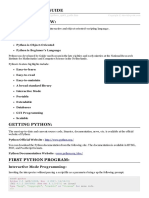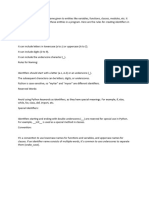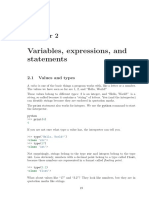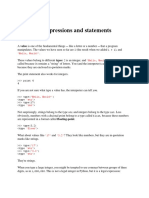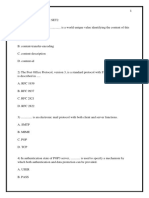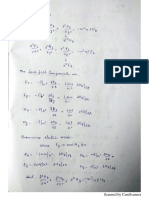0% found this document useful (0 votes)
64 views2 pagesPython Identifier Basics
Python uses identifiers to name variables, functions, classes and other objects. Identifiers can start with a letter or underscore, followed by letters, numbers and underscores, and are case sensitive. Naming conventions include starting classes with uppercase letters and other identifiers with lowercase, while underscores indicate private or special names. The document also discusses multi-line statements using line continuation characters or contained within brackets.
Uploaded by
Goutham VirigineniCopyright
© © All Rights Reserved
We take content rights seriously. If you suspect this is your content, claim it here.
Available Formats
Download as DOCX, PDF, TXT or read online on Scribd
0% found this document useful (0 votes)
64 views2 pagesPython Identifier Basics
Python uses identifiers to name variables, functions, classes and other objects. Identifiers can start with a letter or underscore, followed by letters, numbers and underscores, and are case sensitive. Naming conventions include starting classes with uppercase letters and other identifiers with lowercase, while underscores indicate private or special names. The document also discusses multi-line statements using line continuation characters or contained within brackets.
Uploaded by
Goutham VirigineniCopyright
© © All Rights Reserved
We take content rights seriously. If you suspect this is your content, claim it here.
Available Formats
Download as DOCX, PDF, TXT or read online on Scribd
/ 2









